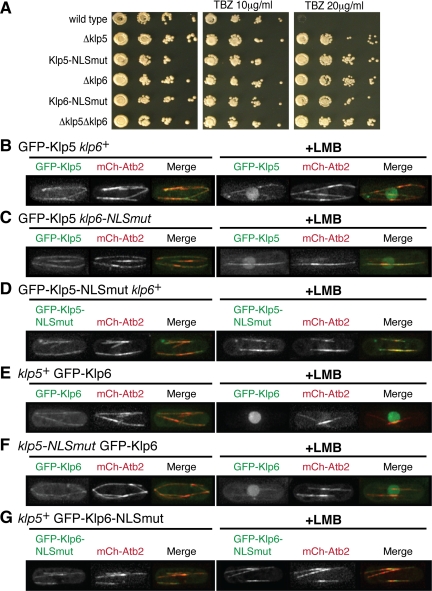Figure 4.
Each NLS mutant is nonfunctional and fails to accumulate in the nucleus upon LMB addition even in the presence of its wild-type counterpart. (A) Functional test of NLS mutants. Ten-fold serial dilutions of various mutants plus a wild-type control strain as shown were spotted onto rich YE medium containing 0, 10, or 20 μg/ml TBZ as indicated (5 × 103 cells were applied in the first spot). Plates incubated for 2 d at 30°C. (B–G) Localization of Klp5/6 wild-type and NLS mutants in the presence of each counterpart. Plasmids containing GFP-klp5+ (B and C), GFP-klp5-NLSmut (D), GFP-klp6+ (E and F), or GFP-klp6-NLSmut (G) were transformed into Δklp5 cells (B and D), Δklp5 klp6-NLSmut (C), Δklp6 (E and G), or klp5-NLSmut Δklp6 (F) strains each containing mCherry-Atb2. Representative images of interphase cells before (left three panels) or after LMB addition (75–90 min; right three panels) are shown. In merged images, GFP-Klp5/6 and mCherry-Atb2 are shown in green and red, respectively. After LMB addition, both Klp5 and Klp6 wild-type molecules accumulate in the nucleoplasm (B, C, E, and F), whereas no nuclear signals of NLS mutants are observed (D and G). Bar, 10 μm.

